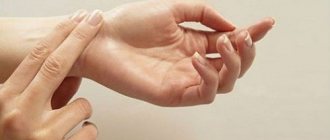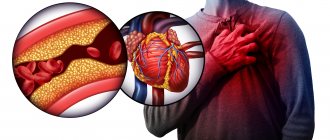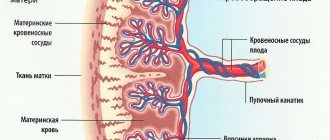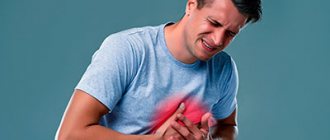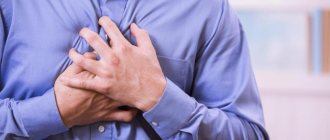Low pulse is one of the complaints of patients in cardiology departments. This phenomenon can cause many unpleasant moments, since it is accompanied by fainting states, weakness, cold sweat, dizziness, often being a sign of serious illness. Its systematic occurrence is a reason to seek professional medical help.
In order to find out the cause of a rare pulse, the doctor prescribes comprehensive diagnostic tests to identify existing problems. The pulse is represented by jerky oscillations of the arterial walls, by which the heart rate can be tracked and, having identified their violations, appropriate measures can be taken.
If you look at the accepted indicators of normal heart rate for different ages, you can conclude that it decreases as you get older. This is due to the growth of the muscular middle layer, known as the myocardium. The larger the volume of the heart, the fewer beats it needs to make in order to pump blood.
Causes of low heart rate
Despite the fact that the maximum frequency indicators can be called conditional and individual, depending on a number of factors (undoubtedly, within certain limits), the pulse is below 50 beats/min. - a sign of the presence of a disease. Its reduction to forty beats poses a threat to health and life, since the brain suffers from oxygen starvation. If it does not exceed forty beats within seven days, this is a sign of bradycardia, and with a progressive decrease, you should urgently seek professional medical help.
Almost all initiating factors of a pulse below normal are related to pathological conditions. For convenience, experts divide them into different categories, which can be found in our table.
| Category of reasons | How is it manifested? |
| Physiological | There are a number of natural factors and external influences that initiate a low pulse at normal pressure. Such conditions are not dangerous. This:
|
| Cardiological | The reasons for low blood pressure and low pulse may lie in the weakness of such a vital organ as the heart. They occur in the following diseases:
|
| Toxicological | Low blood pressure and low pulse can develop due to interaction with toxic substances when:
|
| Associated pathological conditions |
|
Low heart rate in the elderly is associated with age-related changes in the body. It often develops due to concomitant diseases or a natural slowdown in the body’s metabolic processes.
Normal in children
So, we have found out what the pulse should be during normal walking for men and women, now we will consider the norm for children.
Remember your little ones: how often do we get touched, where do they get so much energy? Indeed, a child’s body functions much more intensively than an adult’s, and therefore all processes proceed faster. Children are constantly growing, and this requires a lot of effort. This is why a high heart rate when walking in a child is not a violation.
Tall, based on the parameters for adults. For children it is quite normal. Do you remember what is the normal heart rate for an adult when walking, we wrote about this above? From 100 to 130 beats/min. How much do you think a child's heart rate should be when walking? Remember, the normal range is from 110 to 180 beats/min!
At the same time, age is of great importance - closer to 10-12 years, the standard is compared with the indicators for an adult. After walking or at rest, the children's pulse should be in the range of 80-130 beats/min (for children from 6 months to 10 years).
If you are wondering what a child's heart rate should be when walking fast at a specific age, use the universal formula:
A = ((220 - A) - B) * 0.5 + B;
- A – child’s age;
- B – pulse at rest;
- N – pulse value during sports activity;
Let's say your son is 7 years old. You measured his rhythm before walking and got a value of 85 beats per minute. Let's do the calculation:
((220-7)-85)*0.5+85 = 149 beats/min. This indicator for this child will be considered the “golden” norm. Of course, we recommend using special heart rate monitors.
Clinical manifestations of low heart rate
A moderate decrease in pressure most often does not lead to the development of clinical manifestations and is not accompanied by circulatory disorders. However, with a heart rate of no more than forty beats per minute, the following are observed:
- dizziness;
- weakness;
- semi-fainting and fainting;
- feeling of constant fatigue;
- labored breathing;
- pain symptoms in the chest area;
- blood pressure surges;
- inability to concentrate;
- forgetfulness;
- visual impairment.
Symptoms with a low pulse correspond to circulatory disorders that appear against its background. So, if it is slowed down, the brain suffers from a lack of oxygen and hypoxia develops (that is, oxygen starvation). As a result, the patient is susceptible to convulsions and loss of consciousness, lasting from several seconds to one minute. Such conditions are life-threatening and can cause respiratory arrest and therefore require immediate medical attention.
After meal
Eating affects blood circulation, the heart increases the flow to the stomach, so the heart rate increases slightly. On average, fluctuations from rest are 5-10 beats. Some people experience signs of bradycardia or tachycardia after eating, which indicates poor circulation or heart disease. Pulse after eating - the norm will be violated if:
- diabetes mellitus;
- obesity;
- myocardial pathology;
- pathological processes of the stomach;
- abnormalities in the functioning of the thyroid gland.
Diagnosis of low heart rate
Determining the causes of a pathologically low pulse requires a comprehensive diagnosis. First of all, the doctor listens to the patient’s complaints, collects anamnesis and conducts an examination. If bradycardia (i.e., decreased heart rate) is detected, the patient is prescribed a consultation with a cardiologist. As for diagnostic studies, they are as follows:
- Electrocardiography;
- Daily Holter monitoring;
- Ultrasound scan of the heart;
- EchoCG;
- Bicycle ergometry.
In addition, if necessary, TEE can be performed, which allows one to study the conduction pathways of the heart and determine the organic or functional nature of the disease.
Normal in older people
Almost every person, upon reaching the age of 60, is recommended to take daily walks. Walking helps improve blood circulation, warms up muscles well, and has a general strengthening effect on the entire body. Walking does not cause sudden increases in heart rate, which is why such a load is called gentle.
The normal pulse of an elderly person when walking should not differ from the value for an adult, i.e. it is 60-110 beats/min. However, in their seventh decade, people often have various chronic diseases that in one way or another affect the cardiovascular system.
Acceptable heart rate values when walking for older people should not go beyond 60-180 beats/min. If the indicators turn out to be higher, walk more slowly, rest more, and do not strive to set records. It is still necessary to move, at least to get a good breath of fresh air. If you experience painful tingling in the heart area, dizziness or any other ailments, immediately stop training. If painful manifestations occur frequently, visit a doctor.
Treatment for low heart rate
A moderate decrease in heart rate that occurs without symptoms does not require therapy. However, if it exists, the underlying pathology must be treated. The strategy depends on the underlying disease, but in any case is aimed at:
- Elimination of symptoms of low heart rate;
- Eliminating the risk of heart rhythm disturbances;
- Prevention of thrombosis development.
If the problem arose as a result of uncontrolled use of pharmacological drugs, their dose is adjusted - or, if they are not needed, completely canceled.
How to quickly increase your heart rate?
If a rare pulse is not a symptom of heart disease and appears for physiological reasons, you can speed it up and eliminate unpleasant symptoms by using simple remedies available in almost every home. Before starting activities, it is important to take into account the circumstances under which the heart rate decreased.
| Initiating factor | How and with what is it manifested? |
| Stress, shock, nervous disorders | If the heart rate decreases to forty beats per minute or below, you can take sedatives:
|
| Decreased blood pressure and pulse | The best option is to take decoctions for:
|
| Increased blood pressure and decreased heart rate | The best solution would be:
|
| Pregnancy |
|
If a person is sufficiently resilient and healthy, physical activity (from running, jumping and squats to cardio exercises) would be a good option.
The importance of training
Walking is considered very light physical activity.
But at the same time, it can provide incredible benefits to our body. Scientists have long established the benefits of walking and advise all people who have no contraindications to this exercise to walk as often as possible. This will not only burn extra calories, but will also keep your body toned. Even a fifteen-minute walk will bring invaluable benefits to your health. Man is born to move. During movements, the body activates metabolic processes and allows tissues and organs to be actively saturated with oxygen. This is why daily walks are so important in the life of every person.
Prevention of rare pulse
Preventive measures boil down to timely treatment of organic heart lesions, elimination of the effects of toxic substances on the myocardium, competent selection of doses of pharmacological drugs and their administration under medical supervision. Don't forget to make regular preventive visits to your therapist and cardiologist.
Make an appointment with CELT specialists and find out the reasons for your rare pulse without delay.
Make an appointment through the application or by calling +7 +7 We work every day:
- Monday—Friday: 8.00—20.00
- Saturday: 8.00–18.00
- Sunday is a day off
The nearest metro and MCC stations to the clinic:
- Highway of Enthusiasts or Perovo
- Partisan
- Enthusiast Highway
Driving directions
